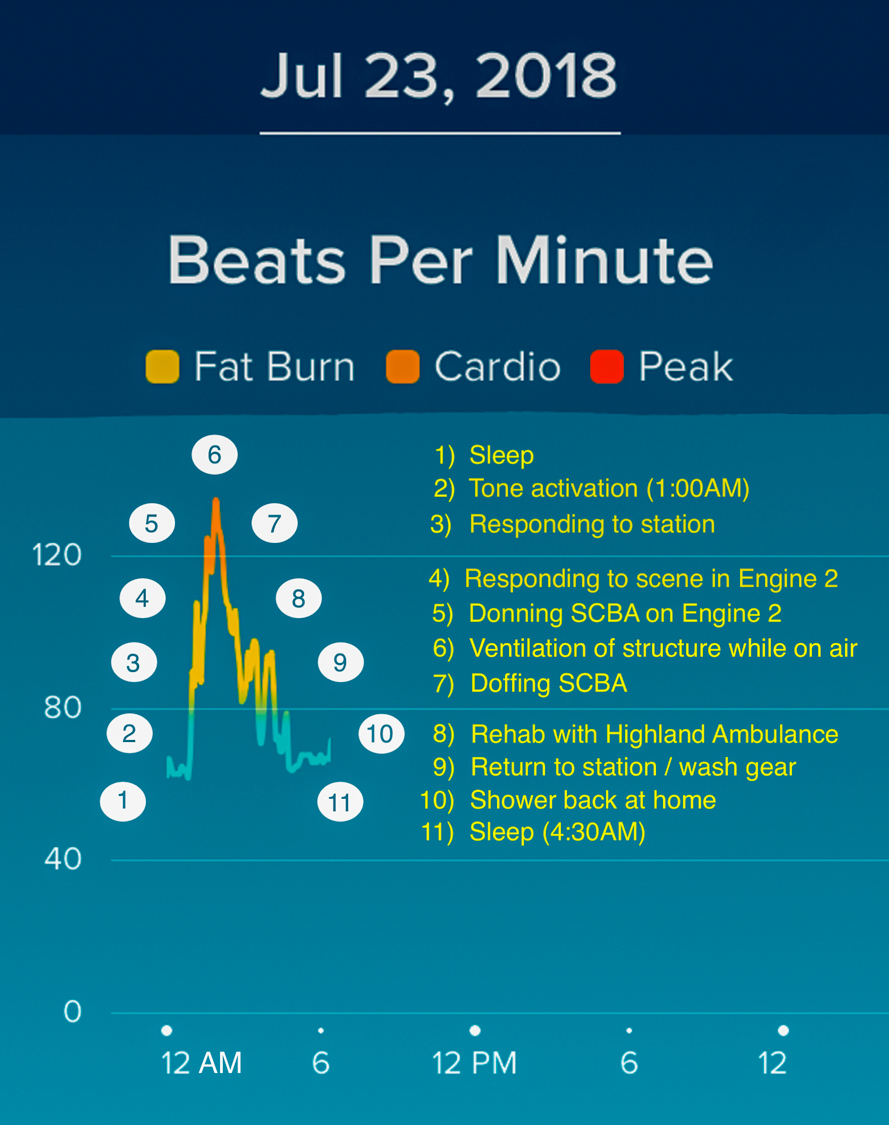According to the NFPA, a heart attack brought on by overexertion and stress is the leading cause of firefighter Line of Duty deaths.
This graphic, captured on a Fitbit during Monday morning’s structure fire in Chesterfield, provides a rarely seen visual of the changes in heart rate experienced by firefighters from the time the first alarm goes off to the time they go back to bed.
During the initial response to an alarm, our bodies experience a significant increase in heart rate which continues to rise as the demands to our cardiovascular system are put to the test.
High heat coupled with high physical demands during fireground operations are only two of many risk factors that contributed to a peak rate of 139 bpm.
This is why a crew from Highland Ambulance is always on scene with us whenever we’re called to a structure fire. They play an important role of taking and monitoring our vital signs between evolutions.

